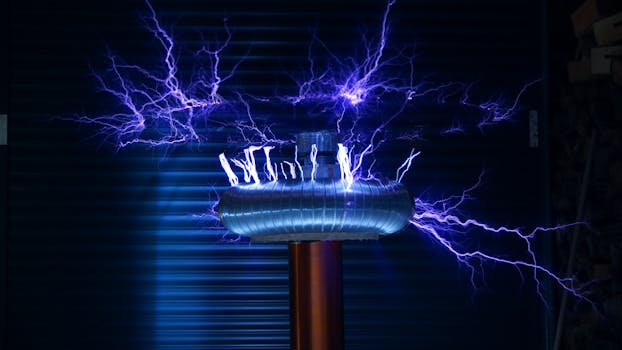Free energy grants - home electricity saving strategies and energy reduction tips
Reducing home energy consumption is a priority for many households looking to cut costs and minimize environmental impact. Free energy grants provide financial assistance to homeowners and renters seeking to improve their energy efficiency. Grants provided through government programs or utility firms frequently assist in offsetting expenses for insulation, energy-efficient heating solutions, and renewable energy systems.

Taking advantage of these programs can significantly lower energy bills and reduce reliance on fossil fuels.
Beyond grants, implementing energy-saving strategies at home can make a noticeable difference in electricity usage. Simple changes such as upgrading appliances, optimizing heating and cooling systems, and adopting energy-efficient lighting can lead to substantial savings. Grasping ways to decrease daily energy use helps save on household expenses and supports environmental sustainability.
Understanding Free Energy Grants
Many governments and local authorities offer free energy grants to encourage homeowners to improve their property’s efficiency. These grants typically support projects such as installing solar panels, upgrading insulation, or replacing outdated boilers with energy-efficient models. Programs differ depending on the location, making it crucial to review the specific eligibility criteria and funding options available in your vicinity.
In the United States, the Weatherization Assistance Program (WAP) helps low-income families improve home energy efficiency by providing free insulation, heating system upgrades, and air-sealing services. Similarly, the UK offers schemes such as the Energy Company Obligation (ECO), which requires major utility providers to fund improvements for eligible households.
The application process for these grants usually involves an assessment of your home's current energy performance. This may include an inspection from a certified auditor who determines which upgrades will provide the most benefits. If approved, homeowners receive funding or direct installation services at little to no cost.
Practical Strategies for Reducing Electricity Use
While grants help with larger projects, small everyday actions can also contribute to significant reductions in electricity consumption. Implementing simple strategies can lower utility bills without requiring major investments.
- Switch to LED Lighting: Replacing incandescent bulbs with LED alternatives can reduce lighting costs by up to 75%.
- Unplug Unused Devices: Electronics continue to consume power even when turned off; using power strips makes it easier to disconnect multiple devices at once.
- Adjust Thermostat Settings:Reducing your thermostat setting slightly in the winter or raising it a bit in the summer can result in significant cost savings.
- Avoid Peak Hours: Running appliances during off-peak hours reduces strain on the grid and may qualify you for lower electricity rates if your provider offers time-of-use pricing.
- Use Energy-Efficient Appliances: When replacing household appliances, look for Energy Star-rated models that consume less power while maintaining performance.
The Impact of Home Insulation on Energy Efficiency
A well-insulated home retains heat in winter and stays cool in summer, reducing the need for excessive heating or air conditioning. Free energy grants frequently cover improvements such as installing attic insulation, filling wall cavities, and adding double-glazed windows.
The U.S. Department of Energy estimates that proper insulation can cut heating and cooling costs by up to 20%. In older homes with inadequate insulation, adding extra layers in attics and crawl spaces can prevent heat loss and improve comfort levels year-round.
Draught-proofing doors and windows is another effective way to reduce energy waste. Simple measures such as installing weather stripping or using thermal curtains can enhance insulation without requiring significant expenses.
How Smart Technology Contributes to Reducing Energy Consumption
The adoption of smart home technology provides new ways to monitor and manage electricity usage efficiently. Smart thermostats learn household routines and adjust temperatures automatically for optimal efficiency. Devices such as programmable plugs allow users to set schedules for electronics, ensuring they are not consuming unnecessary power when not in use.
Energy monitoring systems track real-time electricity consumption, helping homeowners identify areas where they can cut back on usage. Some utilities even offer rebates for installing smart thermostats or other energy-saving devices.
Sustainable Energy Sources for Long-Term Savings
Integrating renewable energy solutions such as solar panels or wind turbines can significantly reduce dependence on traditional electricity sources. Many free energy grants support these installations by covering part of the upfront costs or offering tax incentives.
| Energy Source | Benefits | Considerations |
|---|---|---|
| Solar Panels | Lowers electricity bills; renewable source | High initial cost; dependent on sunlight availability |
| Wind Turbines | Sustainable; effective in windy areas | Zoning restrictions; space requirements |
| Geothermal Heating | Efficient heating/cooling; long-term savings | Expensive installation; limited locations suitable |
The return on investment for renewable installations varies depending on location and available incentives. In sunny regions, solar panels can pay for themselves within five to ten years through reduced electricity costs and government subsidies.
The Financial Benefits of Energy Efficiency Improvements
Apart from reducing utility bills, improving home energy efficiency increases property value. Homes with upgraded insulation, efficient HVAC systems, or solar panels often attract buyers willing to pay more due to lower expected operating costs.
The long-term financial impact extends beyond direct savings. Governments frequently offer tax credits or rebates for energy-efficient home improvements. For example, the U.S. federal government provides tax incentives for solar panel installations under the Investment Tax Credit (ITC), making renewable energy solutions more accessible for homeowners (energy.gov).
Pursuing free energy grants alongside proactive energy-saving strategies creates a comprehensive approach to reducing household electricity consumption while maximizing financial savings. Whether through small adjustments like LED lighting or larger investments such as solar panels, every step toward efficiency contributes to a more sustainable lifestyle.
